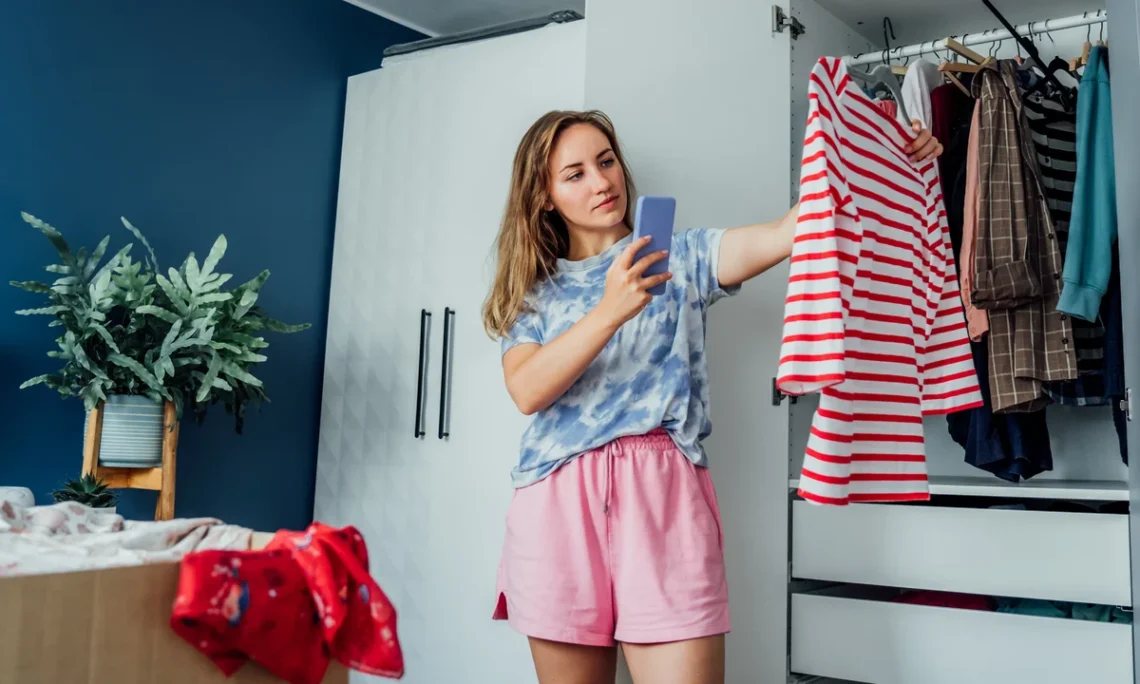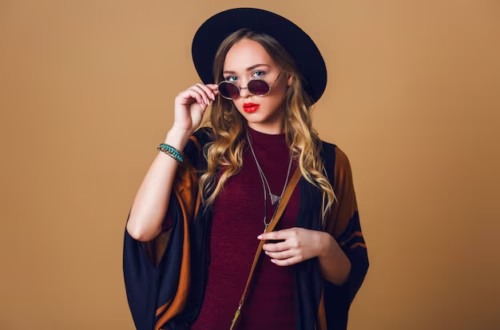The COVID-19 pandemic didn’t just change how we work or socialize—it reshaped how we dress. From sweatpants becoming the unofficial uniform of 2020 to a growing demand for sustainable fashion, the crisis forced us to rethink our relationship with clothing. This article explores how the pandemic sparked a shift toward mindful fashion, blending comfort, sustainability, and personal expression, and whether this change is here to stay.
The Pandemic’s Impact on Fashion: A Wake-Up Call
The fashion industry took a massive hit during COVID-19, with global apparel sales dropping by 27–30% in 2020 compared to 2019, according to McKinsey & Company. Lockdowns shuttered stores, disrupted supply chains, and shifted consumer priorities away from glamour toward survival. But amid the chaos, something remarkable happened: people began to question what they wore and why.
A Shift in Consumer Priorities
When the world paused, so did our need for flashy outfits. With nowhere to go, consumers ditched heels for slippers and suits for loungewear. A McKinsey report noted that 67% of fashion executives observed a pivot toward sustainability and ethical practices during the crisis.
The Rise of Comfort-Driven Choices
I remember swapping my skinny jeans for joggers during lockdown, and honestly, it felt liberating. Comfort became king, with loungewear sales skyrocketing by 140% in early 2020, per Edited. This wasn’t just a trend—it was a lifestyle shift that prioritized feeling good over looking polished.
The Boom of Loungewear and Athleisure
The pandemic turned our homes into offices, gyms, and social hubs, making versatile clothing a necessity. Loungewear and athleisure became the heroes of our wardrobes, offering comfort without sacrificing style.
Why Loungewear Took Over
Sweatpants and hoodies went from couch staples to fashion statements. Brands like Zara and Ralph Lauren leaned into this trend, creating tailored loungewear that worked for Zoom calls and coffee runs. Heuritech’s Instagram analysis found that one in four COVID-related posts was tied to a healthy lifestyle, boosting demand for cozy yet chic pieces.
Athleisure: The New Normal
Athleisure, blending athletic and leisurewear, became a go-to for its versatility. Brands like Lululemon and Alo Yoga saw surges in sales as consumers embraced leggings and cycling shorts for everything from workouts to errands. This shift reflects a broader desire for clothing that adapts to our multifaceted lives.
Sustainability: A New Fashion Priority
The pandemic didn’t just change what we wore—it made us think about the impact of our choices. With fast fashion under scrutiny, consumers began favoring brands that prioritize eco-friendly practices.
The Rise of Eco-Conscious Fashion
A 2020 EY report found that 74% of consumers see sustainability as a priority, and brands like H&M have embraced this by promoting resale and recycling programs. I once bought a pair of jeans from a secondhand shop during lockdown, and it felt like a small win for both my wallet and the planet.
Slow Fashion vs. Fast Fashion
Slow fashion, which emphasizes quality over quantity, gained traction as consumers sought durable, timeless pieces. The contrast with fast fashion’s wasteful model became stark, pushing brands to adopt transparent supply chains and eco-friendly materials like organic cotton.
Comparison: Slow Fashion vs. Fast Fashion
| Aspect | Slow Fashion | Fast Fashion |
|---|---|---|
| Production | Small batches, ethical labor | Mass production, often exploitative |
| Materials | Sustainable, durable (e.g., organic cotton) | Cheap, synthetic fabrics |
| Lifespan | Designed to last | Trend-driven, short-lived |
| Environmental Impact | Low, focuses on recycling/upcycling | High, contributes to landfill waste |
This table highlights why slow fashion aligns with the mindful mindset that emerged post-COVID.
The Digital Revolution in Fashion Retail
Lockdowns pushed fashion online, accelerating e-commerce growth. Statista reported that global online fashion sales hit $600 billion in 2021, a trend that shows no signs of slowing.
E-Commerce Takes Center Stage
With physical stores closed, brands had to pivot fast. Nike’s fitness app, offering at-home workouts, drove a 30% increase in digital sales during the pandemic. Smaller brands also thrived by building community-driven online experiences.
Social Media’s Role in Shopping
Social media platforms like Instagram and TikTok became virtual runways. Influencers showcased how to style loungewear, driving “social shopping” where consumers could buy directly from posts. I once found a sustainable brand on TikTok, and their transparent sourcing won me over instantly.
Mindful Consumption: Buying Less, Loving More
The pandemic gave us time to reflect on our shopping habits, leading to a surge in mindful consumption. Consumers began asking, “Do I really need this?” before hitting “add to cart.”
The Appeal of Durable Apparel
A McKinsey survey found that UK and German shoppers plan to buy more durable clothing and repair items to extend their use. This shift toward longevity is a stark contrast to the pre-COVID frenzy of impulse buys.
Rental and Secondhand Fashion
Rental fashion, like Rent the Runway, and secondhand platforms, like ThredUp, saw a boom as consumers embraced circular fashion. These options let you refresh your wardrobe without the environmental guilt.
Pros and Cons of Rental Fashion
Pros:
- Reduces waste by promoting clothing reuse.
- Affordable access to high-end fashion.
- Encourages trying new styles without commitment.
Cons:
- Limited availability for certain sizes or styles.
- Rental fees can add up over time.
- Hygiene concerns for some consumers.
The Future of Fashion: Glamour’s Comeback?
As the world reopens, will we ditch our sweatpants for stilettos? Experts like fashion psychologist Shakaila Forbes-Bell suggest a hybrid approach, blending comfort with self-expression.
Will Glamour Return?
While comfort remains key, there’s a growing craving for glamour. Post-lockdown “revenge buying” reflects a desire to celebrate through fashion, with consumers seeking bold pieces to express their individuality.
Hybrid Styles: The Best of Both Worlds
Enter “athflow,” a trend combining athleisure’s comfort with professional polish. Think tailored joggers paired with a blazer—perfect for the hybrid work-from-home life. Brands like Reiss have leaned into this with “luxe leisure” collections.
Where to Find Mindful Fashion
Navigating the world of mindful fashion can feel overwhelming, but plenty of resources make it easier to shop consciously.
Sustainable Brands to Explore
Brands like Everlane, Patagonia, and Reformation lead the charge in ethical fashion, offering transparent supply chains and eco-friendly materials. Check their websites for detailed sustainability reports.
Secondhand and Rental Platforms
For pre-loved gems, try ThredUp or Poshmark. If renting appeals, platforms like Nuuly and Rent the Runway offer curated selections for every occasion. These sites make sustainable shopping accessible and fun.
Best Tools for Mindful Fashion Shopping
Building a mindful wardrobe is easier with the right tools. Here are some top picks to help you shop smarter.
Apps for Sustainable Shopping
- Good On You: Rates brands based on their ethical and environmental impact.
- Vestiaire Collective: A luxury secondhand marketplace for high-quality finds.
- Depop: A community-driven platform for unique, pre-loved pieces.
These apps empower you to make informed choices without sacrificing style.
Technology for Personalized Fashion
Augmented reality (AR) tools, like those from ASOS, let you virtually try on clothes, reducing returns and waste. AI-driven platforms also recommend pieces based on your style and values.
People Also Ask (PAA)
How has COVID-19 changed the fashion industry?
The pandemic shifted consumer priorities toward comfort and sustainability, boosting loungewear and e-commerce while challenging traditional retail.
What are the latest fashion trends post-COVID?
Trends include athleisure, loungewear, and sustainable fashion, with a focus on versatile, eco-friendly pieces that balance style and comfort.
Are consumers more sustainable after COVID-19?
Yes, 67% of fashion executives noted a shift toward sustainable and ethical purchases, with consumers favoring durable and eco-friendly clothing.
Where can I buy sustainable fashion?
Check out brands like Everlane and Patagonia or platforms like ThredUp and Rent the Runway for eco-conscious options.
FAQ: Mindful Fashion After COVID-19
Q: What is mindful fashion?
A: Mindful fashion focuses on making intentional, sustainable clothing choices that prioritize quality, ethics, and environmental impact over fast trends.
Q: How can I start shopping sustainably?
A: Begin by researching brands with transparent supply chains, opting for secondhand or rental options, and using apps like Good On You to guide your purchases.
Q: Why is loungewear so popular post-COVID?
A: Loungewear surged due to remote work and lockdowns, offering comfort and versatility for home-based lifestyles, a trend that persists as consumers value ease.
Q: Are sustainable clothes more expensive?
A: They can be, but the higher upfront cost often pays off with durable, long-lasting pieces. Secondhand and rental options also make sustainability affordable.
Q: What’s the future of fashion post-COVID?
A: Expect a blend of comfort and glamour, with a focus on sustainability, digital shopping, and hybrid styles like athflow that adapt to modern life.
Conclusion: A Mindful Fashion Future
The COVID-19 pandemic was a wake-up call for the fashion industry, pushing us toward a more mindful approach to what we wear. From embracing loungewear to prioritizing sustainability, consumers are rethinking their wardrobes with intention. As we move forward, the blend of comfort, style, and ethics will likely define fashion’s future. So, next time you’re shopping, ask yourself: does this piece spark joy and align with my values? That’s the mindful way to dress.





